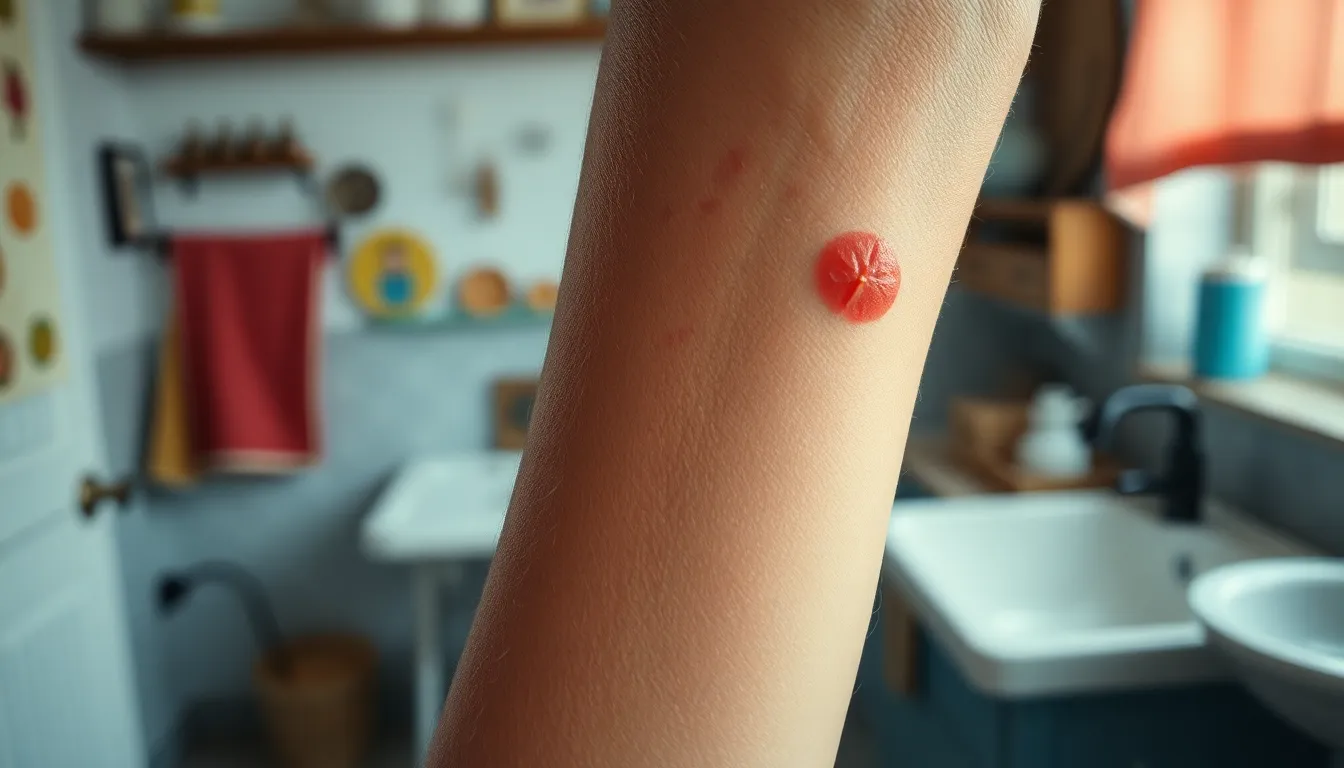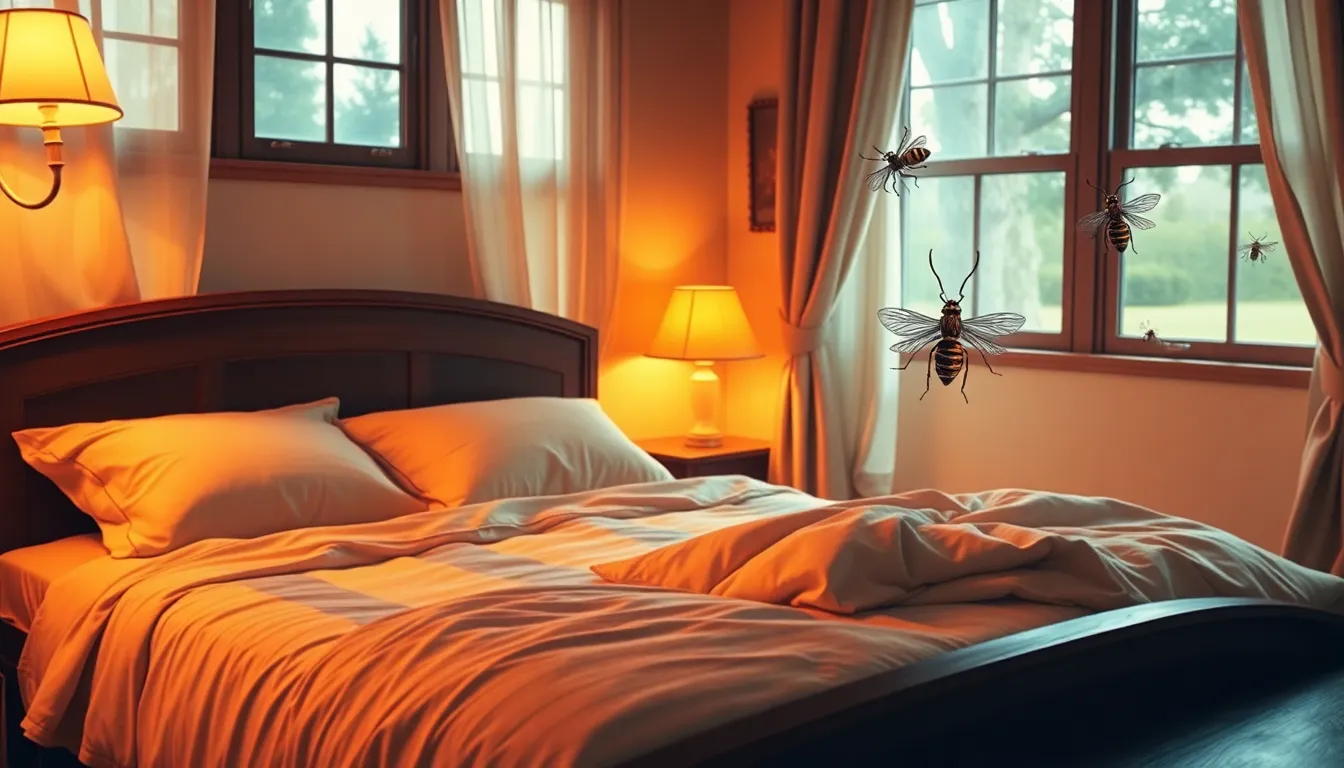Table of Contents
ToggleImagine settling into bed after a long day, ready to drift off into dreamland, only to be interrupted by tiny, invisible ninjas buzzing around your ears. No see ums, those pesky little insects, can turn a peaceful night into a scratchy nightmare. They’re like the unwelcome guests who sneak in without an invitation, leaving you wondering if you’ve turned into a human buffet.
Understanding No See Ums
No see ums are tiny insects known for causing uncomfortable bites during the night. These pests can easily invade homes and disrupt sleep with their relentless presence.
What Are No See Ums?
No see ums, also known as biting midges, belong to the family Ceratopogonidae. These minuscule insects typically measure 1 to 3 millimeters in length. They thrive in humid environments and are most active during dawn and dusk. Unlike mosquitoes, no see ums can slip through regular window screens, making them a common nuisance indoors. Their bites can cause intense itching and irritation, sometimes leading to allergic reactions. Many people don’t realize these pests exist until they experience their painful bites.
Life Cycle of No See Ums
The life cycle of no see ums includes four main stages: egg, larva, pupa, and adult. Females lay eggs in moist conditions, often near standing water or damp soil. Eggs hatch within a week into larvae, which feed on decaying organic matter. After several weeks, the larva enters the pupal stage, transforming into a fully formed adult. Adults typically emerge within two weeks and can live for several weeks under ideal conditions. Warm weather, high humidity, and adequate breeding sites contribute to rapid population growth, exacerbating their presence in homes.
Identifying No See Ums in Bed

Recognizing no see ums in bed can be challenging due to their tiny size and elusive nature. Awareness of their signs helps manage discomfort from bites and intrusion.
Signs of No See Ums Bites
Red, itchy welts often appear on the skin after a no see um bite. These symptoms can resemble those from other insect bites but are typically more intense. Swelling may occur around the bite area. Many individuals experience allergic reactions leading to further complications like blisters. They often find that the itching intensifies at night, disrupting sleep. Some people notice multiple bites clustered in a small area, especially around exposed skin. These signs signal that no see ums are present.
Common Areas in the Home
No see ums tend to thrive in specific areas of the home. Moist environments, such as kitchens or bathrooms, frequently attract these pests. Areas near standing water are prime breeding grounds, making proximity to ponds or stagnant water dangerous. They also favor spaces with decaying organic matter, such as plant pots or clogged drains. Window screens that lack tight seals can invite them indoors. Attics and basements may also offer shelter during warmer months. Understanding where to inspect helps in maintaining a no see um-free home.
Prevention Strategies
Preventing no see ums requires a proactive approach to minimize their presence. These strategies focus on reducing exposure and deterring the insects from invading living spaces.
Best Practices to Avoid No See Ums
Utilize window screens with small mesh sizes to keep no see ums outside. Ensure all doors and windows seal tightly to block entry points. Maintain dry environments inside the home by fixing leaks and using dehumidifiers in damp areas. Regularly clean and remove decaying organic matter around the yard and garden. Position outdoor furniture away from stagnant water sources, as these attract biting midges. Keep grass trimmed and vegetation well-maintained, reducing habitats where they can thrive. Implementing these practices significantly lowers the likelihood of encountering these pests.
Natural Remedies and Repellents
Essential oils like citronella, eucalyptus, and lavender can repel no see ums effectively. Mix these oils with a carrier oil for application on exposed skin. Vinegar serves as another natural deterrent; spraying diluted vinegar in areas of high activity can keep them at bay. Sticky traps attract and capture no see ums indoors, providing another method of control. Natural insect repellents that contain those essential oils or other botanical ingredients can create a barrier against bites. Always opt for eco-friendly solutions to ensure safety for pets and humans alike.
Treatment Options
Numerous methods exist to alleviate the discomfort caused by no see um bites. Choosing the right approach can make a significant difference in managing symptoms and preventing further irritation.
Home Remedies for Bites
Aloe vera offers soothing relief when applied directly to bites. This natural remedy helps reduce swelling and calms irritation. Another option involves using a paste of baking soda and water, which can minimize itching. Similarly, applying a cold compress effectively numbs the itchy areas and lessens inflammation. Essential oils, such as tea tree oil or lavender oil, also serve as soothing agents; diluting them with a carrier oil enhances safety when applied to the skin.
Over-the-Counter Solutions
Topical corticosteroids provide effective anti-inflammatory effects to relieve itching and redness. Applying them directly to affected areas can significantly ease the discomfort. Antihistamine creams are another viable option, as they help counteract allergic reactions from bites. Additionally, oral antihistamines can effectively reduce overall allergic responses when symptoms persist. For numbing sensations, products containing lidocaine serve as effective temporary relief when applied to itchy areas.
Dealing with no see ums in bed can turn a restful night into a frustrating experience. Their tiny size and stealthy nature make them difficult to spot, but the discomfort they cause is all too real. By understanding their habits and lifecycle, homeowners can take proactive measures to keep these pests at bay.
Implementing preventive strategies and utilizing effective treatments can significantly reduce the impact of no see um bites. With proper care and attention, it’s possible to reclaim peaceful nights and enjoy a comfortable sleep environment. Staying informed and prepared is key to managing these unwelcome intruders.





